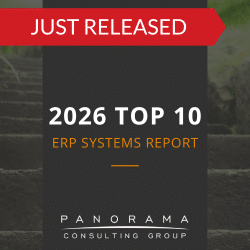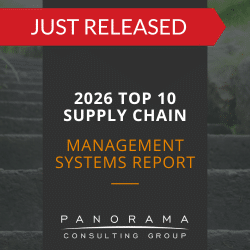Lynyrd Skynyrd once said that free birds can’t change. Most companies employ people that have worked for some time to learn the organization’s culture, business processes, and way of doing things. Hopefully you have talented and capable people ensuring that your operations work day in and day out. So when it comes time to throw a big change at them, let’s just say a new ERP system as an example, then you’re bound to get resistance. After all, why change something that isn’t 100% broken and has worked just fine thanks to the hard work of these free birds?
While new business software may be a no-brainer to executives, it isn’t always as clear to employees. As a result, an organizational change plan is critical to a successful enterprise software rollout. If you have an organizational change management plan, then you’re already one step ahead of most companies. This is fortunate for you, but unfortunate for all those companies that forget to focus on organizational change while implementing enterprise business software.
In our ongoing research of ERP implementations across the globe, we found that nine things separate best-in-class enterprise system initiatives from those that fail. Of those nine failure points, six of them are either directly or indirectly related to organizational change management.
See if you recognize the sources of ERP failure that are mitigated by an effective organizational change strategy:
- Lack of purpose for implementing ERP
- Not going into the project with “eyes wide open”
- Lack of executive and management buy-in
- Not leveraging internal and external “A-Team” resources
- Not choosing software that is aligned with key business requirements
- Misalignment between software configuration and business processes and/or workflows
- Lack of effective organizational change management and training
- Weak internal and external project management
- Underdeveloped business case to manage business benefits
With the exception of items #s 4, 5, and 8, organizational change management activities can positively impact everything on the above list. Of course, that assumes that you execute your organizational change initiatives correctly with experienced resources and proven tools and methodologies.
So the first step to effective organizational change, and a successful ERP implementation as a direct result, is to recognize the need for these activities and define your change management strategy and plan. This should include much more than simple, transactional-based ERP system training; it should also include organizational structure and job design, employee communications, business process gap analysis, benefits realization, and a multitude of other important enablers of change. After all, why invest tons of money in new business software if your organization, people, and processes aren’t going to adapt and provide a return on the investment?
Since organizational change management is one of our three main ERP consulting competencies, we can help. Learn more by attending our upcoming webinar, Managing Organizational Change on Your ERP Implementation. In addition, learn more about our three-day on-site Organizational Change Management Training and Planning Workshop.













